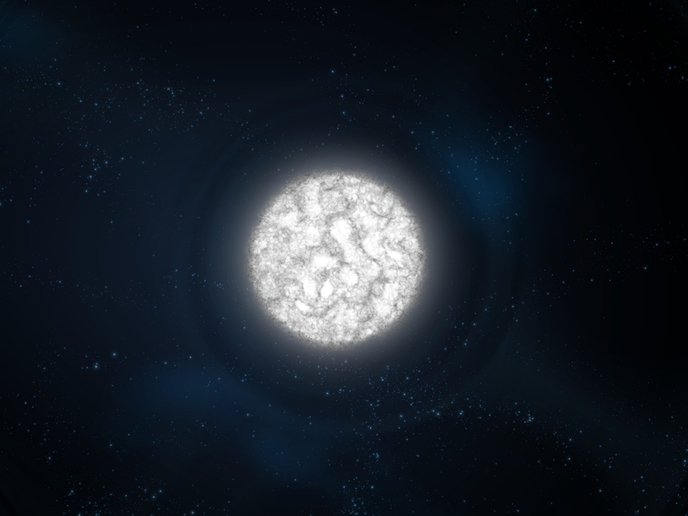Exploring the origins of carbon in dying Sun-like stars to analyse the galaxies
Have you ever wondered where the carbon in our body is from and whether we are all made of stars? Carbon – the main ingredient in organic compounds found in all living organisms on Earth – and its origins is a topic frequently studied by astrophysicists. To track down the main sources of carbon, an international team of researchers has analysed groups of white dwarfs, very dense stellar remnants that gradually cool and dim over billions of years. They found that the majority of the carbon in our galaxy came from stars twice the size of the Sun, expelling large amounts of mass and becoming small white dwarf stars. Supported by the EU-funded WD3D and STARKEY projects, the study was published in the journal ‘Nature Astronomy’. For the purposes of the study, the scientists used observations of white dwarfs in open star clusters, groups of up to a few thousand stars held together by mutual gravitational attraction and formed around the same time in the Milky Way. The data used was from the W. M. Keck Observatory in Hawaii collected in 2018. The researchers discovered that the masses of white dwarfs analysed “were notably larger than expected, putting a ‘kink’ in the initial-final mass relation [IFMR] for stars with initial masses in a certain range,” as noted in a news item by the University of California Santa Cruz (UCSC). In the same news item, lead author Prof. Paola Marigo from STARKEY host University of Padua states: “Our study interprets this kink … as the signature of the synthesis of carbon made by low-mass stars in the Milky Way.”
From birth to death
As the researchers explain in the journal article, the IFMR “links the birth mass of a star to the mass of the compact remnant left at its death.” In the final phases of their lives, such stars spread their ashes into the surrounding space through stellar winds enriched with chemical elements, including carbon. “The team’s detailed stellar models indicate that the stripping of the carbon-rich outer mantle occurred slowly enough to allow the central cores of these stars, the future white dwarfs, to grow appreciably in mass,” according to the UCSC news item. It adds: “Analyzing the initial-final mass relation around the kink, the researchers concluded that stars bigger than 2 solar masses also contributed to the galactic enrichment of carbon, while stars of less than 1.5 solar masses did not.” In the same news item, Prof. Marigo comments: “Now we know that the carbon came from stars with a birth mass of not less than roughly 1.5 solar masses.” Co-author Pier-Emmanuel Tremblay, Associate Professor at WD3D host University of Warwick, emphasises that the IFMR “is also what sets the lower mass limit for supernovae, the gigantic explosions seen at large distances and that are really important to understand the nature of the universe.” The ongoing WD3D (Evolution of white dwarfs with 3D model atmospheres) project aims “to calculate 3D simulations for stellar remnants of all atmospheric chemical compositions and connect these surface calculations to interior structure models, where the gas turns into a liquid and then a solid,” as stated in a periodic report. The STARKEY (Solving the TP-AGB STAR Conundrum: a KEY to Galaxy Evolution) project that also contributed to the study ended in April 2019. For more information, please see: WD3D project STARKEY project
Keywords
WD3D, STARKEY, carbon, white dwarf, Milky Way, initial-final mass relation



